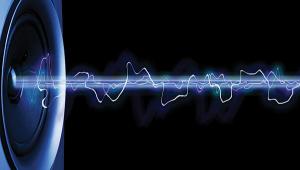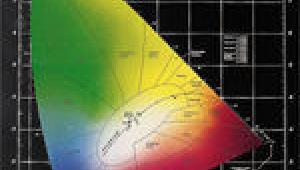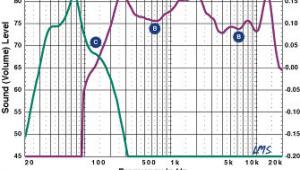HT Measurements Explained: Absolute Power - Power Amplifiers
 | |
| A. A dedicated multichannel amplifier doesn't have the frills of a receiver but likely offers better performance. |
Power. For centuries, armies and legions, men and women, and even democrats and republicans have fought, struggled, connived, and tricked their way into getting it. Power is said to corrupt absolutely, yet we all want more of it, and few might attain it. In the home theater world, the amplifier is where the real power comes from. The amplifier takes the miniscule signal from the source components or preamp and, with some help from the electrical outlet, increases that signal level to drive the speakers. Amplifiers come as dedicated components, but they can also be built into speakers and subwoofers, which are then referred to as powered or active. Receivers are nothing more than two or more amplifiers combined with a preamp and tuner (aka AM/FM radio).
Since power plays so prominent a role in a home theater system, it only makes sense to discuss it as a separate category, even though (as I mentioned) it may actually be one part of a larger product. In theory, an amplifier should take the existing signal and make it larger without changing its character or adding additional noise. We use test signals to measure how much power an amplifier, or the amplifier section of a receiver, puts out. We also measure the amplifier's frequency response and the amount of noise that might be added to the signal. While these may not be the only characteristics that describe how an amplifier sounds, they at least help determine whether a given product might fit in with your system.
 | |
| B. A receiver is a combination of a preamp, a surround processor, an AM/FM tuner, and a multichannel amplifier. |
For starters, we measure continuous power output by inputting a known signal, a sine wave, to an amplifier with a given load, and then we increase the signal level until the amplifier's output distorts. Continuous power, also known as RMS (root mean squared) power, is the amount of output that the amplifier can sustain over long periods at a given level of distortion without self-destructing or engaging a protection mechanism. Some amps are capable of far greater output for very brief periods. This is called dynamic, or peak, power. Dynamic power can be important, as music and movie soundtracks are extremely dynamic in nature. A typical soundtrack may be quiet, and thus will use little power, for the vast majority of the program. Only brief peaks, like explosions, orchestral crescendos, or drum hits, may require significant amplification. Unfortunately, we are not currently able to measure peak power.
- Log in or register to post comments
























































